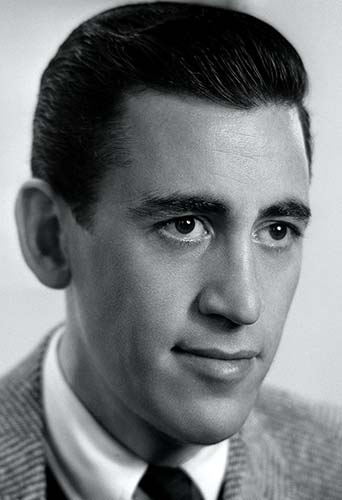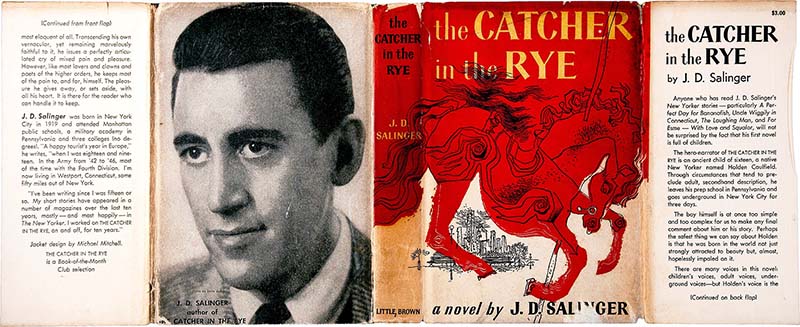Share via:
J.D. Salinger – American author, 1919-2010

Born in New York City, Jerome David Salinger had his first story published in Story when he was twenty-one and, by 1948, he was publishing almost exclusively for the New Yorker. Some of the stories included in the magazine, “Franny” (1955), “Raise High the Roof-Beam, Carpenters” (1955), “Zooey” (1957) and “Seymour” (1959), shared a similarity of character—sensitive and perceptive, bright yet naive young narrators who feel trapped by the hypocrisy surrounding them. Of the many “lost” adolescents who people the pages of Salinger’s writings, none is as famous as Holden Caulfield,
“If you really want to hear about it, the first thing you’ll probably want to know is where I was born, and what my lousy childhood was like. . . and all that David Copperfield kind of crap .” So begins The Catcher in the Rye (1951), a book that has become both a classic in American literature and an object of heated debate and that made J.D. Salinger and his hero, Holden Caulfield, literary phenomena.
Holden, a model of innocence and illusion, tells the story of his two-day adventure in New York City from inside a psychiatric hospital where he is recovering from a breakdown. On the surface, Holden appears to be an unlikable character—he alienates himself from his peers, is unable to tell the truth, and is being expelled from his third prep school—yet the reader is fascinated by him in his role as the “outcast.”
Just as Huckleberry Finn, the original adolescent outcast, struggles to find his place in a complex and changing world, Holden navigates his way through the traumatic and very real problems of adolescence. The link between Huckleberry and Holden is strengthened by their choice of language—the informal and colloquial speech of the American teenager. Holden peppers his speech with slang, four-letter words, and the often repeated goddam. It is this raw, honest, and authentic language that caused the book to be temporarily banned in South Africa, Australia, and numerous classrooms and libraries across America.

J.D. Salinger has become almost as notorious as Holden. Soon after the publication of The Catcher in the Rye, Salinger retreated to New Hampshire and, since 1965, has published nothing. Having created the voice of a generation, Salinger silenced his own, claiming that he found the attention he received to be “hectic and professionally and personally demoralizing.” Unaffected by Salinger’s reclusive behavior, The Catcher in the Rye, the story of a young man caught between childhood and maturity and unsure which way to go, captured—and continues to capture—the hearts and minds of young adults as no other book has.
§ M.I.A.
Source: Chidlren’s Books and their Creators, Anita Silvey.
J.D. Salinger’s Selected Works
Books
- The Catcher in the Rye (1951)
- Nine Stories (1953)
- “A Perfect Day for Bananafish” (1948)
- “Uncle Wiggily in Connecticut” (1948)
- “Just Before the War with the Eskimos” (1948)
- “The Laughing Man” (1949)
- “Down at the Dinghy” (1949)
- “For Esmé—with Love and Squalor” (1950)
- “Pretty Mouth and Green My Eyes” (1951)
- “De Daumier-Smith’s Blue Period” (1952)
- “Teddy” (1953)
- Franny and Zooey (1961)
- “Franny” (1955)
- “Zooey” (1957)
- Raise High the Roof Beam, Carpenters and Seymour: An Introduction (1963)
- “Raise High the Roof-Beam, Carpenters” (1955)
- “Seymour: An Introduction” (1959)
- Three Early Stories (2014)
- “The Young Folks” (1940)
- “Go See Eddie” (1940)
- “Once a Week Won’t Kill You” (1944)
